Many homeowners take pride in their lush, green lawns. But as with all garden endeavors, there’s always a challenge: weeds. Understanding common lawn weeds can be the first step to combat and prevent them. In this guide, we’ll identify the most prevalent lawn weeds found in Southern Ontario and offer insights on tackling them.
1. Dandelion (Taraxacum officinale)
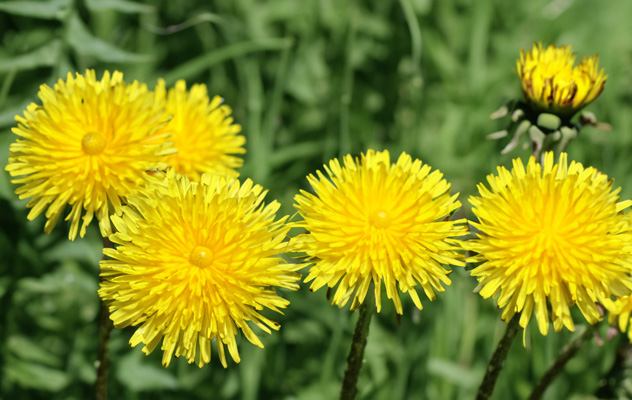
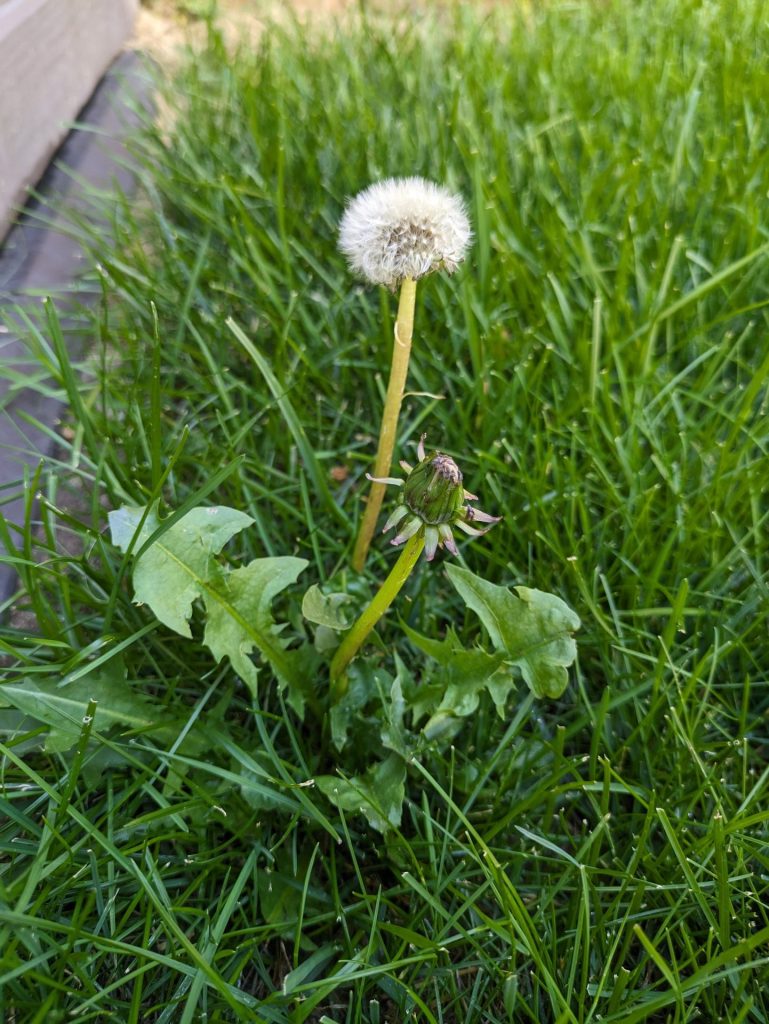
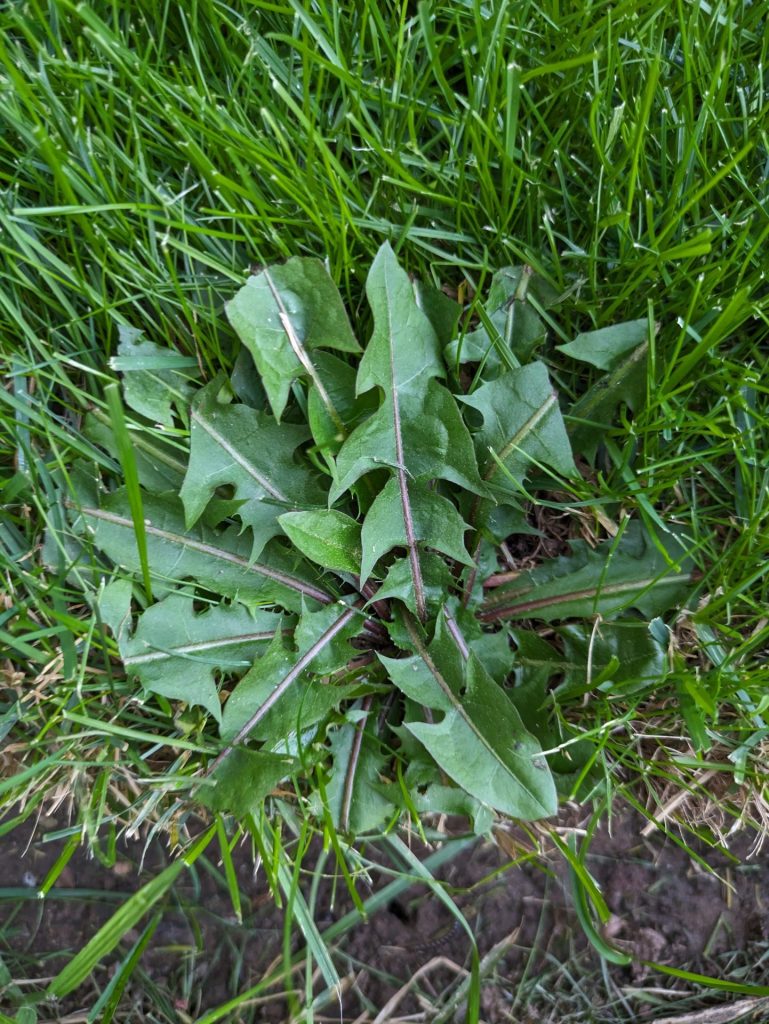
- Appearance: Distinctive yellow flowers that turn into white puffballs containing seeds.
- Why it’s a problem: Dandelions spread rapidly, with each flower head producing countless seeds that can be distributed by the wind.
- Control: Manual removal is effective if you ensure the entire root is extracted. Pre-emergent herbicides can prevent them from sprouting.
2. Crabgrass (Digitaria)
- Appearance: Grass-like, with spread-out stems that radiate from the center and thin blade-like leaves.
- Why it’s a problem: It grows aggressively during summer, taking over patches of lawn.
- Control: Pre-emergent herbicides applied in early spring can prevent crabgrass from germinating. Regular lawn mowing can also limit its spread.
3. Plantain (Plantago major and Plantago lanceolata)
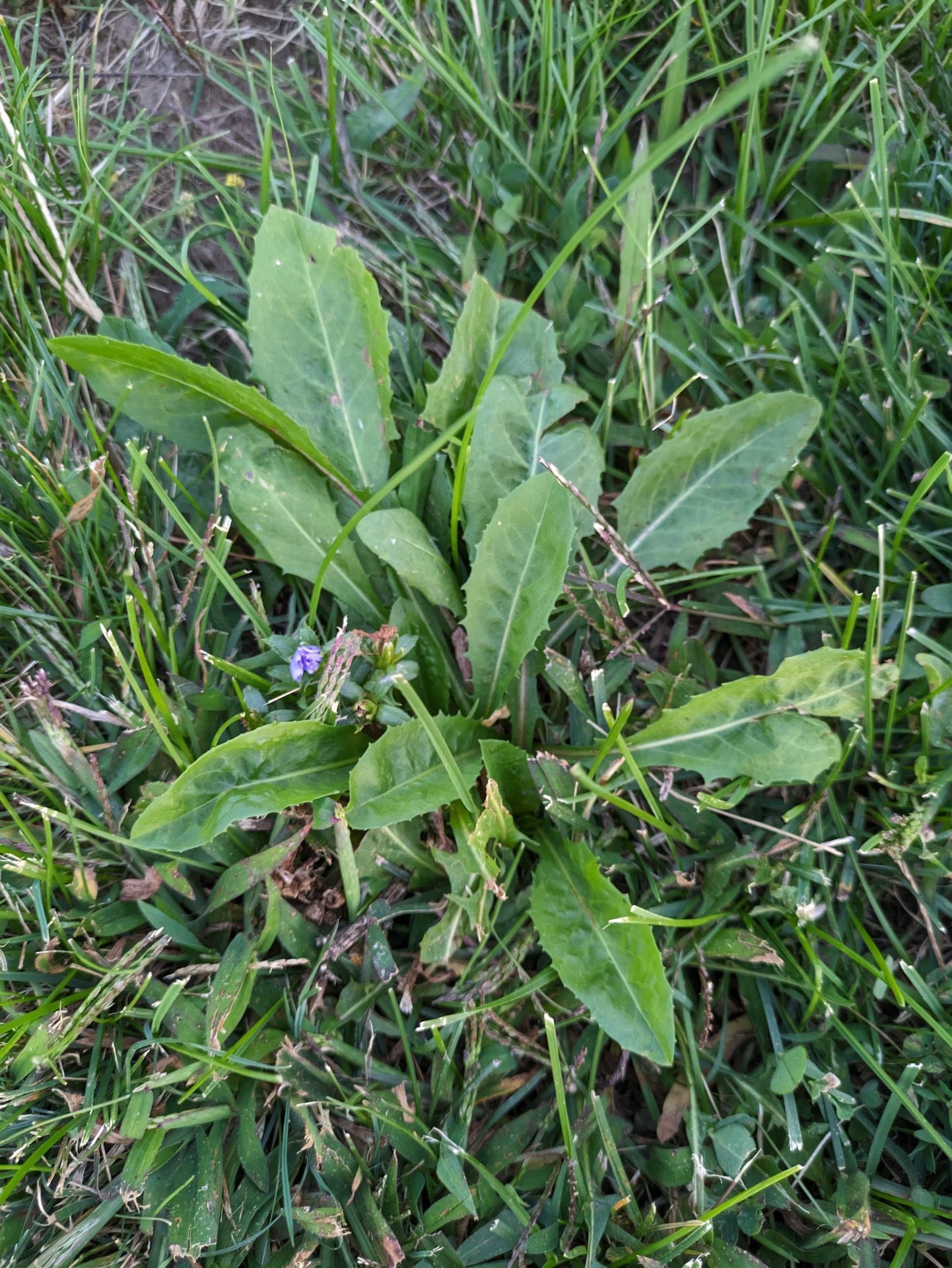
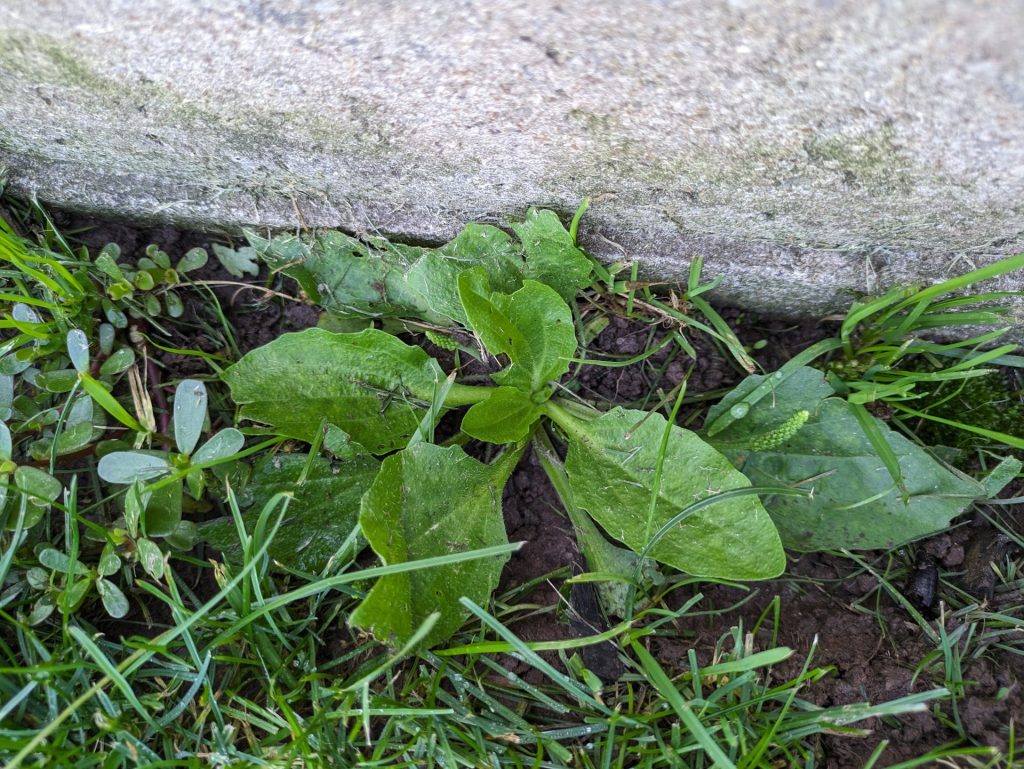
- Appearance: Broadleaf plantain has oval-shaped leaves, while narrow-leaf or buckhorn plantain has elongated leaves. Both types have flower stalks that protrude upward.
- Why it’s a problem: They compete with grass for nutrients and can create unsightly patches.
- Control: Manual removal by ensuring the entire root is uprooted or using selective post-emergent herbicides.
4. Creeping Charlie or Ground Ivy (Glechoma hederacea)
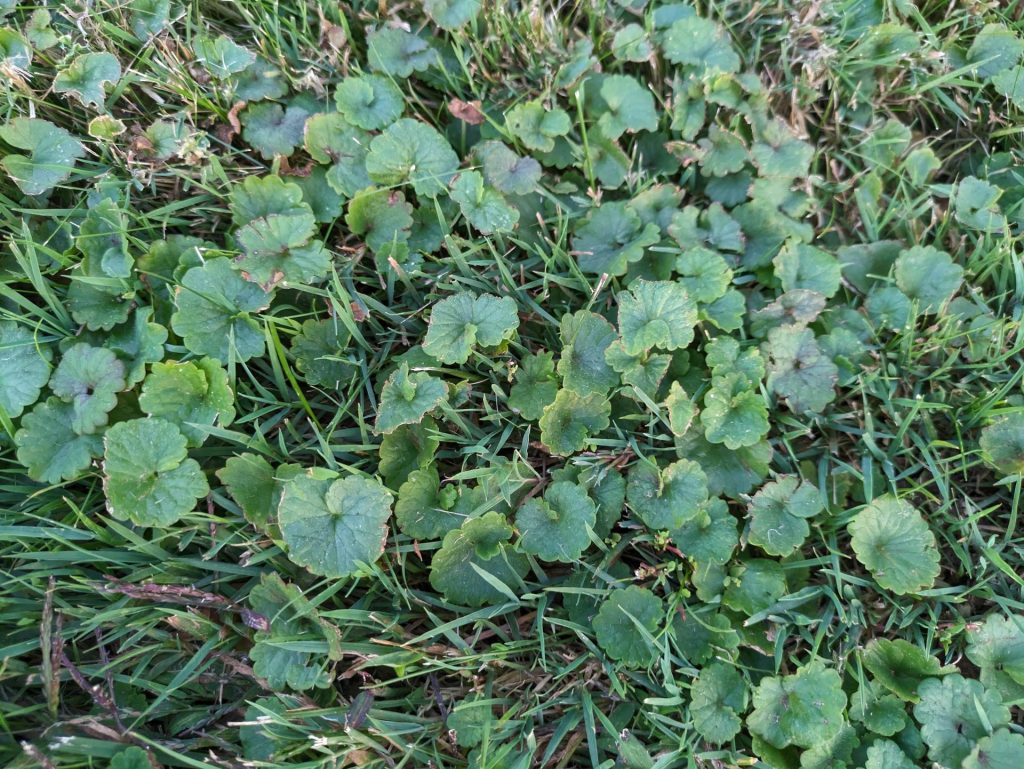
- Appearance: Ground cover with rounded leaves and small, purple funnel-shaped flowers.
- Why it’s a problem: It spreads quickly and forms a dense carpet, choking out grass and other desirable plants.
- Control: Use post-emergent herbicides in the fall. Ensure good lawn health as a strong lawn can resist Creeping Charlie invasions.
5. Chickweed (Stellaria media)
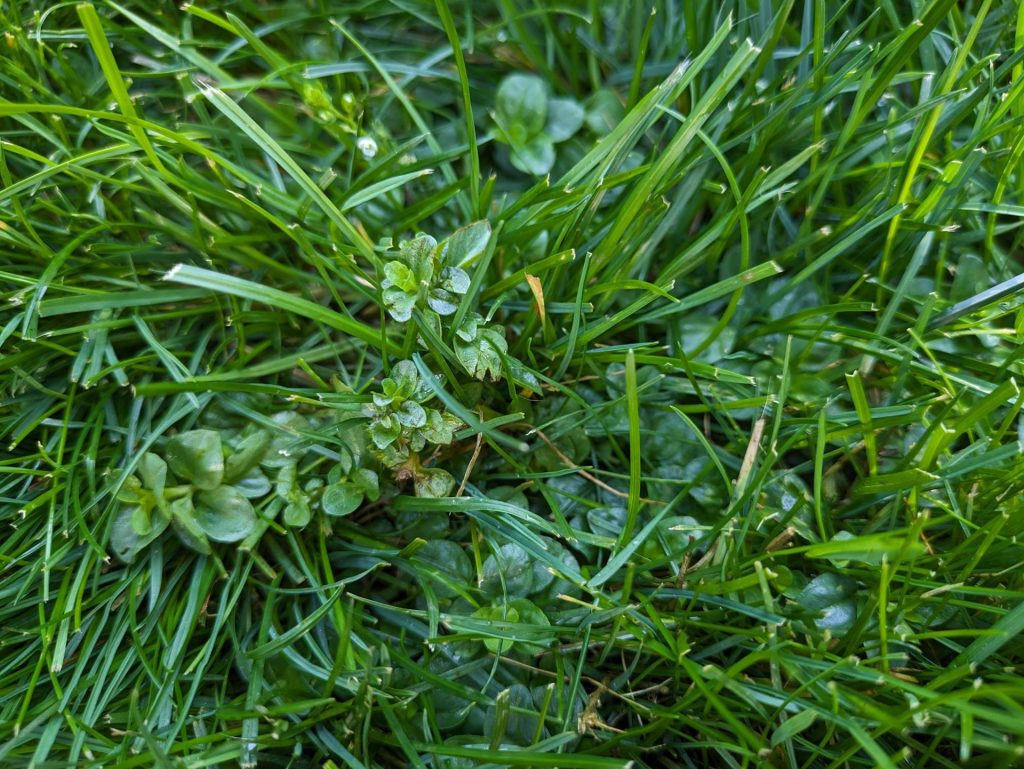
- Appearance: Small, star-shaped white flowers with oval leaves opposite each other on the stem.
- Why it’s a problem: It grows rapidly, covering ground and depriving the lawn of nutrients.
- Control: Encourage a thick lawn, which acts as a natural barrier. Herbicides can be effective if applied early in its growth stage.
6. Clover (Trifolium)
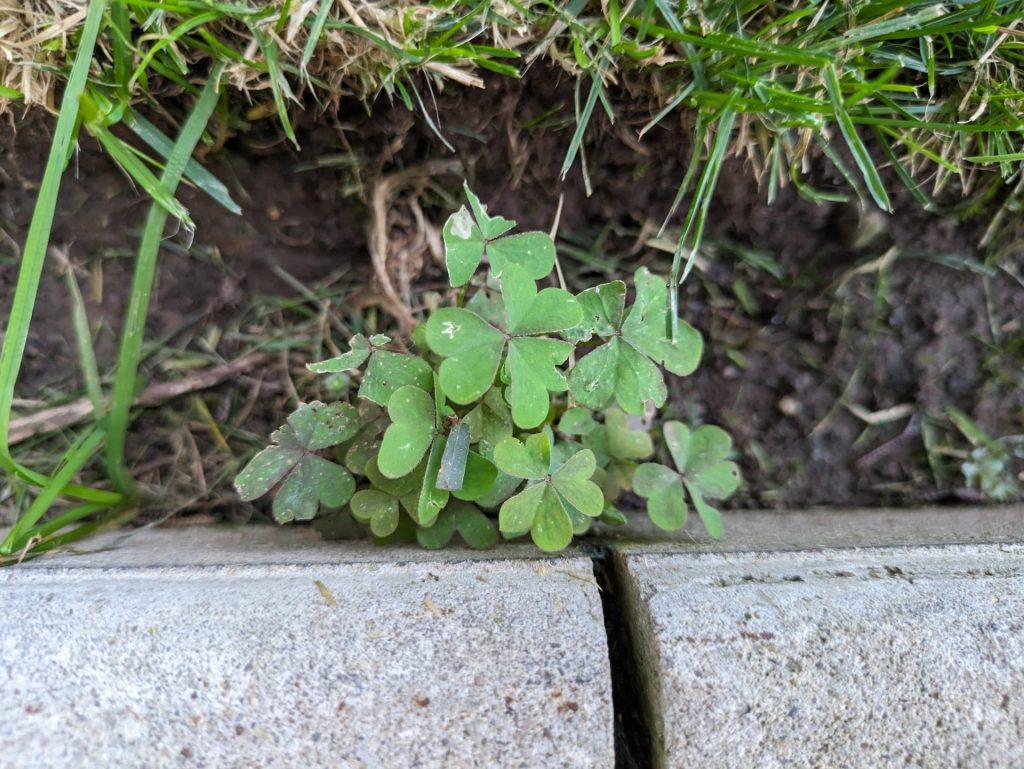
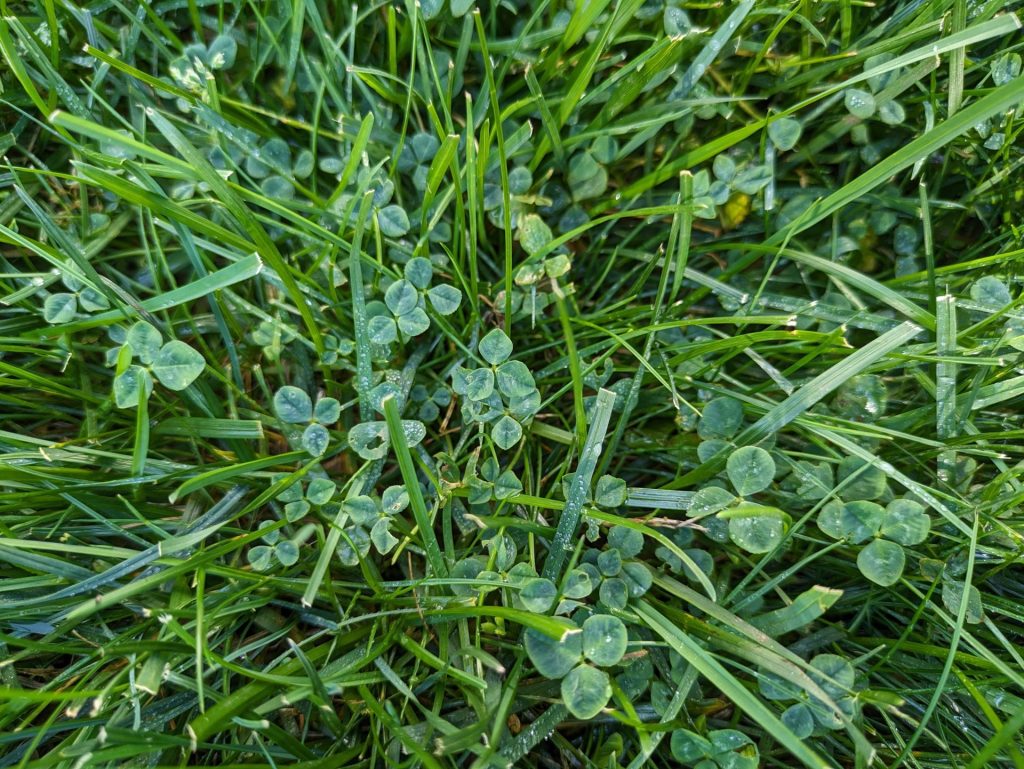
- Appearance: Small green leaves grouped in threes with tiny white or pink flowers.
- Why it’s a problem: While some homeowners appreciate clover for its ability to fix nitrogen, others consider it a weed due to its contrasting appearance in a lawn.
- Control: Maintain lawn health and mow regularly. If deemed necessary, post-emergent herbicides can be used.
7. Alfalfa (Medicago sativa L.)
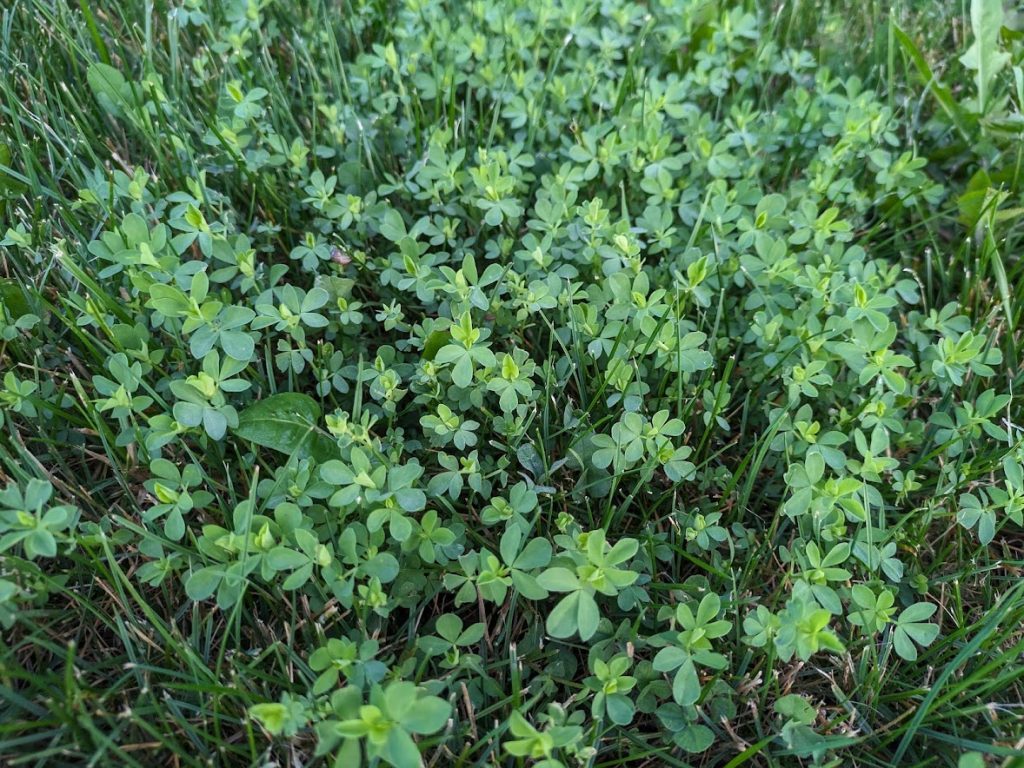
- Appearance: Also known as lucerne, is a perennial herbaceous legume with trifoliate leaves, small purple flowers, and spiralled fruits containing seeds.
- Why it’s a problem: Alfalfa is a fast-growing and invasive plant that can outcompete and crowd out the desired grass species. It can also cause problems for people who are allergic to its pollen or have hay fever.
- Control: Use a selective herbicide that kills broadleaf weeds but not grasses, a non-selective herbicide that kills all vegetation but requires reseeding or replanting, or a mechanical method that removes the plant physically by mowing, digging, or tilling .
While the Ontario boasts fertile ground and a climate conducive to beautiful lawns, weeds are an inevitable challenge. By identifying and understanding these common culprits, homeowners can take informed steps to maintain pristine, weed-free lawns. Remember, the best defense against weeds is a healthy, well-maintained lawn.
